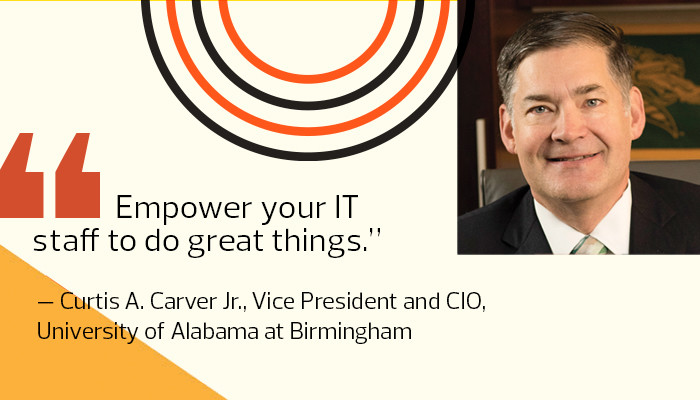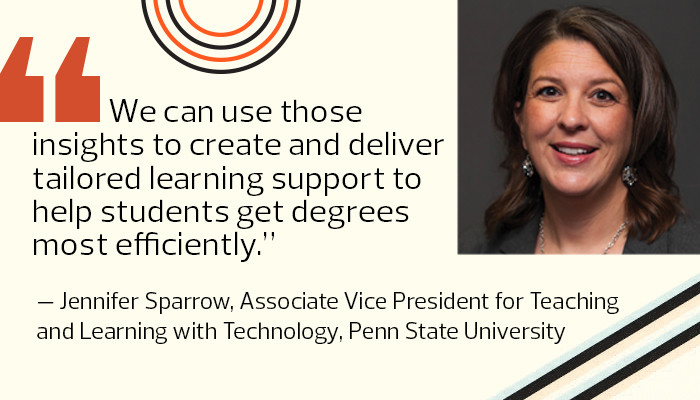Higher Ed Tech Trend #1: Digital Transformation
Digital transformation projects range widely, from digitizing paper processes to installing smart devices throughout a library so patrons can summon staff assistance.
At the University of Alabama at Birmingham, Vice President and CIO Curtis A. Carver Jr. has led a successful digital transformation effort by changing the IT culture, engaging stakeholders and pursuing technology projects, big and small, that delight users. “Our goal is to deliver more than 100 wins a year, where we improve the lives of our customers in some way,” he says.
On his first day as CIO, Carver launched a crowdsourcing website and invited faculty, staff and students to brainstorm potential initiatives. With those ideas, he developed a four-year strategic plan for larger projects, such as network upgrades and a new Voice over IP system.
But he also produced quick wins. Within months, he provided unlimited email through Office 365 and unlimited storage through Box, so users can work unfettered without wasting time managing email or storage limits.
“It was insane. We have high-paid Ph.D.s and medical doctors working to solve cancer, Parkinson’s and Alzheimer’s disease, and IT’s email quota blocked them from sending email,” Carver recalls.
He also streamlined grade submissions. Previously, faculty computed grades on the learning management system and manually added them to the student information system.














